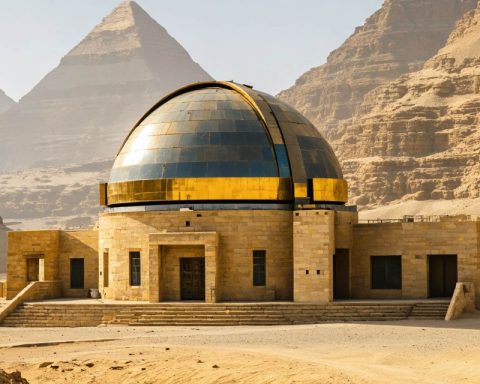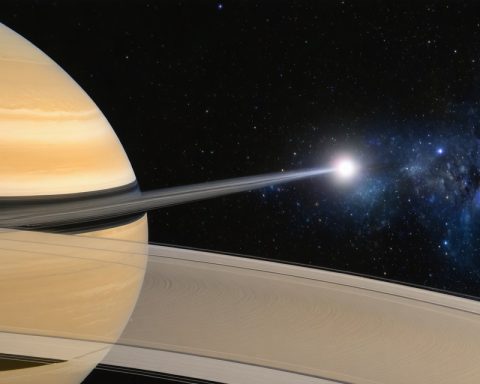- NASA has selected SpaceX to launch the Pandora spacecraft, scheduled to lift off in September.
- Pandora is part of the Astrophysics Pioneers program, which emphasizes cost-effective missions.
- The spacecraft features a 45-centimeter telescope with advanced optical and infrared detectors.
- Pandora will observe 20 stars known to have exoplanets over a year to study their atmospheres.
- Transmission spectroscopy will be utilized to analyze spectral data for signs of hydrogen and water.
- The mission aims to enhance knowledge of distant planetary systems and potentially life beyond Earth.
Get ready for a celestial adventure! NASA has chosen SpaceX to launch its groundbreaking Pandora spacecraft, a mission set to lift off as soon as September. This mission is part of NASA’s Astrophysics Pioneers program, which focuses on low-cost smallsat missions that push the boundaries of our knowledge about distant worlds.
The Pandora spacecraft is equipped with a cutting-edge 45-centimeter telescope that features optical and infrared detectors. Its mission? To observe 20 stars known to host exoplanets over the course of a year. This innovative project aims to uncover the mysteries of exoplanet atmospheres through an advanced technique known as transmission spectroscopy. This method will help scientists determine if the spectral hints picked up by Pandora signal the presence of essential elements like hydrogen and water, or if they simply relate to the variability of the stars themselves.
As NASA gears up for the launch, which is anticipated to occur during the fall, excitement builds. Pandora serves as a vital calibration instrument, providing insights that will significantly enhance our understanding of distant planetary systems. Though specific details about the launch contract remain under wraps, it’s clear that this mission represents a remarkable leap in exoplanet exploration.
With Pandora, the universe awaits! Are we on the brink of discovering life beyond Earth? Stay tuned as this mission promises to illuminate the secrets of our cosmic neighborhood.
Unveiling Pandora: The Next Leap in Exoplanet Exploration!
NASA and SpaceX Join Forces for the Pandora Mission
NASA’s upcoming Pandora mission is poised to revolutionize our understanding of exoplanets. Selected for its cost-effectiveness and innovation, Pandora aims to utilize advanced technology to investigate the atmospheres of distant worlds. Here’s a closer look at what this mission entails, including its implications, specifications, and more.
Mission Summary
The Pandora spacecraft will carry a 45-centimeter telescope with optical and infrared detectors. Its primary objective is to observe 20 stars known to host exoplanets. The planned launch window begins in September, with the mission expected to last about a year. During this time, Pandora will engage in transmission spectroscopy to analyze light that passes through the atmospheres of exoplanets. This allows scientists to identify the chemical composition and assess the potential for life-supporting conditions based on the presence of elements such as hydrogen and water.
Specifications of the Pandora Spacecraft
– Telescope Size: 45 centimeters
– Detection Capabilities: Optical and infrared
– Mission Duration: 1 year
– Primary Technique: Transmission spectroscopy
– Target Quantity: 20 different stars
Why Pandora Matters
Pandora is not just another spacecraft; it serves as a calibration instrument that will enhance our understanding of how to study exoplanetary atmospheres. By refining techniques like transmission spectroscopy, Pandora may provide the groundwork for future missions aimed at the hunt for extraterrestrial life.
Related Insights and Trends
1. Market Forecast for Exoplanet Missions: According to market analysts, investment in astrophysics and planetary science missions is expected to grow by 20% over the next five years, driven by advancements in technology and international collaboration efforts.
2. Use Cases for Advanced Spectroscopy Techniques: The methods developed through Pandora’s mission could be applied in various astrophysical studies, including analyzing comet compositions and studying the atmospheres of other celestial bodies within our solar system.
3. Security Aspects: As mission data will involve sensitive information about space exploration strategies, ensuring data integrity and security against misinformation in the scientific community is critical.
Important Questions About the Pandora Mission
1. What is the significance of transmission spectroscopy in exoplanet research?
Transmission spectroscopy allows scientists to analyze the light filtering through a planet’s atmosphere. By studying how different wavelengths of light are absorbed, researchers can identify the presence of specific chemicals that may be indicators of habitability or biological processes.
2. How does the Pandora mission compare to previous exoplanet missions?
Unlike its predecessors that focused on direct imaging or large-scale surveys, Pandora is a targeted mission. It will closely observe a select few stars to gain deeper insights into their planetary systems, facilitating a more nuanced understanding of elements that suggest the potential for life.
3. What challenges could the mission face during its operation?
The Pandora mission may encounter challenges such as spacecraft malfunction, unforeseen environmental conditions in space, or difficulties in data collection due to star variability affecting the interpretation of results.
For further information on NASA’s missions and initiatives, check out NASA.












